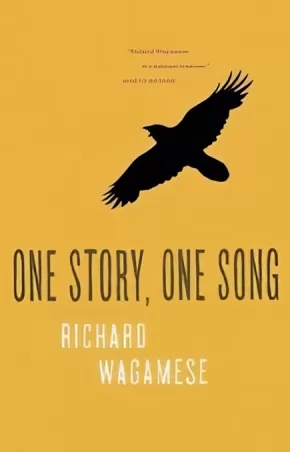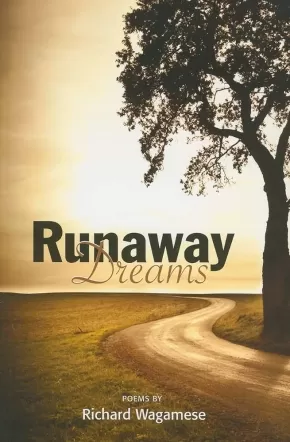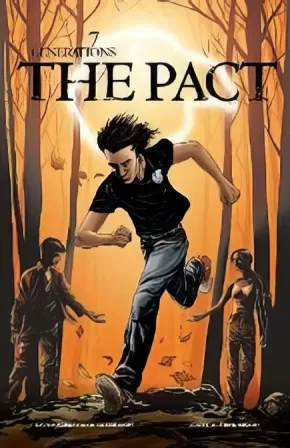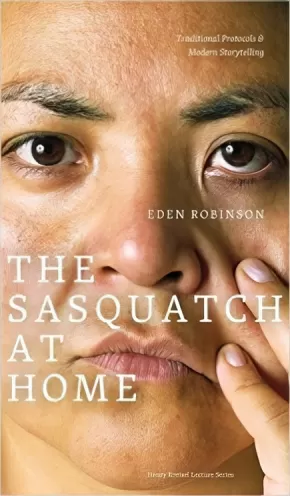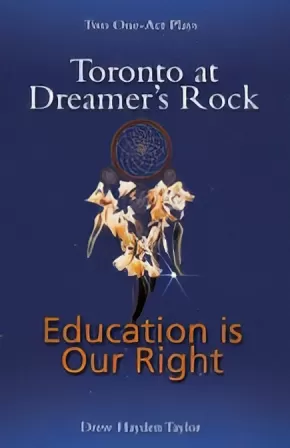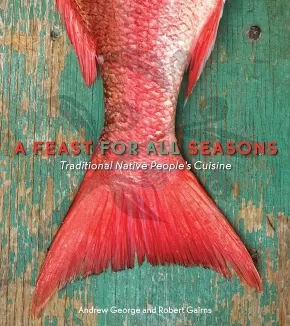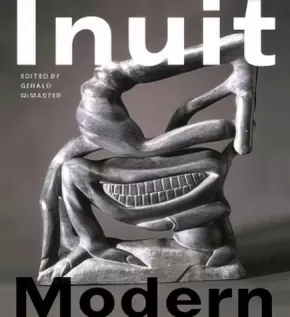
Indigenous Peoples
961
-
975
of
1080 Results;
Sort By
Go To
of 72
One Story, One Song
$19.95
Format:
Paperback
Text Content Territories:
Indigenous Canadian; First Nations; Anishinaabeg; Ojibway; Wabaseemoong First Nation;
ISBN / Barcode: 9781771620802
Synopsis:
Synopsis:
A collection of warm, wise and inspiring stories from the author of the bestselling One Native Life.
Since its publication in 2008, readers and reviewers have embraced Richard Wagamese's One Native Life. In quiet tones and luminous language,wrote the Winnipeg Free Press, Wagamese shares his hurts and joys, inviting readers to find the ways in which they are joined to him and to consider how they might be joined to others.
In this book, Richard Wagamese again invites readers to accompany him on his travels. This time, his focus is on stories: how they shape us, how they empower us, how they change our lives. Ancient and contemporary, cultural and spiritual, funny and sad, the tales are grouped according to the four Ojibway storytelling principles: balance, harmony, knowledge and intuition.
Whether the topic is learning from his grade five teacher about Martin Luther King, gleaning understanding from a wolf track, lighting a fire for the first time without matches or finding the universe in an eagle feather, these stories exhibit the warmth, wisdom and generosity that made One Native Life so popular. As always, in these pages, the land serves as Wagamese' guide. And as always, he finds that true home means not only community but conversation good, straight-hearted talk about important things. We all need to tell our stories, he says. Every voice matters.
Reviews
"One Story, One Song is a collection of short stories that show how stories shape & empower us, and change our lives. The stories are grouped according to the 4 essential principles of the Ojibway traditional teachings: humility, trust, introspection, and wisdom." - The Dalai Lama Center
Additional Information
216 pages | 5.52" x 8.50" | Paperback
Relatives With Roots
$17.50
Artists:
Format:
Paperback
Text Content Territories:
Indigenous Canadian; Métis;
ISBN / Barcode: 9781926795003
Synopsis:
Synopsis:
Relatives With Roots: A Story About Métis Women’s Connection to the Land is a heartfelt story about a Métis grandmother who takes her granddaughter out into the bush to teach her how to pick traditional medicines. As the granddaughter learns the traditional beliefs and stories about how the Métis people use the plants for food and medicine, she feels happy to be a Métis child with access to such wonderful cultural knowledge. This charming and vibrant book introduces young readers to key concepts in the traditional Métis worldview while focusing on the special relationship between a young Métis girl and her grandmother. Relatives With Roots is the second in a series of children’s books relating to traditional Métis values by Leah Marie Dorion. The first book, The Giving Tree: A Retelling of a Traditional Métis Story, was nominated in 2010 for a Willow Award in the Shining Willow category.
Additional Information
61 Pages | 28 cm x 21.5 cm
Runaway Dreams (17 in Stock) - ON SALE
$12.00 $15.95
Format:
Paperback
Text Content Territories:
Indigenous Canadian; First Nations; Anishinaabeg; Ojibway;
ISBN / Barcode: 9781553801290
Synopsis:
Synopsis:
Having developed a large reputation for his many novels and nonfiction works, Richard Wagamese now appears before us as a poet, with a collection of stunning poems ranging over a broad landscape. He begins with an immersion in the immemorial landscape where “the ancient ones stand at your shoulder . . . making you a circle / containing everything.” These are Medicine teachings told from the experience of one who lived and still lives them. He describes his life on the road when he repeatedly ran away at an early age, and the beatings he received when the authorities tried “to beat the Indian right out of me.” Yet even in the most desperate situations, Wagamese shows us Canada as seen through the eyes and soul of a well-worn traveller, with his love of country, his love of people. Through it all, there are poems of love and music, the language sensuous and tender.
Additional Information
100 pages | 9.00" x 6.00"
Shannen and the Dream for a School
$16.95
Format:
Paperback
Text Content Territories:
Indigenous Canadian; First Nations; Cree (Nehiyawak); Swampy Cree ; Attawapiskat;
ISBN / Barcode: 9781926920306
Synopsis:
Synopsis:
This is the true story of Shannen Koostachin and the people of Attawapiskat, a Cree community in Northern Ontario, who have been fighting for a new school since 1979, when a fuel spill contaminated their original school building.
It is 2008, and thirteen-year-old Shannen and the other students at J.R. Nakogee Elementary are tired of attending class in portables that smell and don’t keep out the freezing cold winter air. They make a YouTube video describing the poor conditions, and their plea for a decent school gains them attention and support from community leaders and children across the country. Inspired, the students decide to turn their grade-eight class trip into a visit to Ottawa, to speak to the Canadian government. Once there, Shannen speaks passionately to the politicians about the need to give Native children the opportunity to succeed. The following summer, Shannen is nominated for the International Children’s Peace Prize. Her passion and that of the other students makes politicians stand up and take notice, and becomes a rallying point for the community and for the country.
Shannen will never see her dream fulfilled. Tragically, she was killed in a car crash in 2010. Her family, friends, and supporters are continuing to fight and to honor her memory as they work for equality for children in communities everywhere.
Awards
- In 2012-2013 Shannen and the Dream for a School was the award recipient for First Nation Communities Read.
Educator & Series Information
This book is part of the Kids' Power Series.
Recommended for ages 9 to 13.
Authenticity Note: This book has received the Authentic Indigenous Text label as it is written by Janet Wilson with the participation and support of members of the Attawapiskat community.
The Pact
$13.95
Format:
Paperback
Text Content Territories:
Indigenous Canadian; First Nations; Cree (Nehiyawak); Plains Cree;
ISBN / Barcode: 9781553792307
Synopsis:
Synopsis:
As the pain and loss of James's residential school experiences follow him into adulthood, his life spirals out of control. Haunted by guilt, he is unable to maintain a relationship with Lauren and their son Edwin. Edwin, mired in his own pain, tries to navigate past the desolation of his fatherless childhood. As James tries to heal himself he begins to realize that, somehow, he may save his son's life – as well as his own. When father and son finally meet, can they heal their shattered relationship, and themselves, or will it be too late?
Educator & Series Information
The Pact is the final book in the 7 Generations series.
7 Generations is an epic, 4-book graphic novel series by David Alexander Robertson that spans three centuries and seven generations. The central character in the series is Edwin. Edwin, an Indigenous teenager, must learn of his family’s past if he is to have any future. The impact of his journey of discovery, and the revelation that follows, will change his life.
The stories that run through 7 Generations explore the following historical concepts:
- Social customs
- Political structures
- Plains Cree culture
- Spiritual practices and rituals
Recommended for grades 9–12.
Books in this series include:
Book 1: Stone
Book 2: Scars
Book 3: Ends/Begins
Book 4: The Pact
Additional Information
30 pages | 6.50" x 10.00"
The Sasquatch at Home
$12.99
Format:
Paperback
Text Content Territories:
Indigenous Canadian; First Nations; Haisla (Kitamaat); Heiltsuk (Bella Bella);
Grade Levels: 12; University/College;
ISBN / Barcode: 9780888645593
Synopsis:
Synopsis:
In March 2010 the Canadian Literature Centre hosted award-winning novelist and storyteller Eden Robinson at the 4th annual Henry Kreisel Lecture. Robinson shared an intimate look into the intricacies of family, culture, and place through her talk, "The Sasquatch at Home." Robinson's disarming honesty and wry irony shine through her depictions of her and her mother's trip to Graceland, the potlatch where she and her sister received their Indian names, how her parents first met in Bella Bella (Waglisla, British Columbia) and a wilderness outing where she and her father try to get a look at b'gwus, the Sasquatch. Readers of memoir, Canadian literature, Aboriginal history and culture, and fans of Robinson's delightful, poignant, sometimes quirky tales will love The Sasquatch at Home.
Reviews
"[Eden Robinson's] lecture reprises the Sasquatch theme from her novel, Monkey Beach. It is less a lecture than an extended poem – a love song to a place and people, a celebration of survival of places, names, and humans.... The work is filled with alternate narratives. Just when we are eagerly following a line of story or thought, out come Trickster-ish turns and teases.... Robinson seductively draws outsiders in, then sharply clarifies the limits of the welcome.... Eden Robinson brings her own literary ethics to the discussion [of the limits of cross-cultural sharing]. Her consciousness and conscientiousness permeate her fiction as well as the Sasquatch lecture. It is fitting that Paula Simons calls her 'one of Canada’s most provocative and talented writers' and also 'a moral and cultural force'." -Valerie Alia, Cantext, February 2012
Additional Information
64 pages | 14.00" x 23.00"
Toronto at Dreamer's Rock. Education is Our Right: Two One-Act Plays
$14.95
Format:
Paperback
Text Content Territories:
Indigenous Canadian;
ISBN / Barcode: 9781897252703
Synopsis:
Synopsis:
In these two one-act plays, Drew Taylor delves into the past and speculates about the future as he examines the dilemmas facing young Native Canadians today.
Toronto at Dreamer's Rock is a moving portrayal of a teenage boy who is torn between the traditions of his people, which he only vaguely understands, and the lure of modern life. His magical encounters with two members of his tribe - one from 400 years in the past and one from the future - make him aware of how little he has thought about what it means to be an Indian.
Education is Our Right borrows from the familiar story of Charles Dickens' A Christmas Carol, but in this version the spirits of Education Past, Present and Future attempt to show the Minister of Indian Affairs the error of his ways.
Drew Taylor combines humour, passion, spirituality, and tough realism to create a hopeful vision of the future that will appeal especially to young adult readers. Both plays have toured extensively to schools in Ontario and Quebec.
An Ojibway from the Curve Lake First Nations in Ontario, Drew Hayden Taylor has worn many hats in his literary career, from performing stand-up comedy at the Kennedy Center to being Artistic Director of Canada’s premiere Native theatre company, Native Earth Performing Arts.
He has been an award-winning playwright, a journalist/columnist, short-story writer, novelist, television scriptwriter, and has worked on over 17 documentaries exploring the Native experience.
500 Years of Indigenous Resistance (PB)
$10.95
Format:
Paperback
Text Content Territories:
Indigenous American; Indigenous Canadian; Indigenous Central American; Indigenous South American;
Reading Level: N/A
ISBN / Barcode: 9781552663974
Synopsis:
Synopsis:
The history of the colonization of the Americas by Europeans is often portrayed as a mutually beneficial process, in which ”civilization” was brought to the Natives, who in return shared their land and cultures. A more critical history might present it as a genocide in which Indigenous peoples were helpless victims, overwhelmed by European military power. In reality, neither of these views is correct. This book is more than a history of European colonization of the Americas. In this slim volume, Gord Hill chronicles the resistance by Indigenous peoples, which limited and shaped the forms and extent of colonialism. This history encompasses North and South America, the development of nation-states and the resurgence of Indigenous resistance in the post-WW2 era.
Additional Information
72 pages | 8.50" x 5.50"
A Feast for All Seasons: Traditional Native Peoples' Cuisine
$24.95
Format:
Paperback
Text Content Territories:
Indigenous Canadian;
ISBN / Barcode: 9781551523682
Synopsis:
Synopsis:
Traditional North American Native peoples' cuisine has existed for centuries, but its central tenet of respecting nature and its bounty have never been as timely as they are now. Andrew George, of the Wet'suwet'en Nation in Canada, is a well-respected aboriginal chef and instructor who has spent the last twenty-five years promoting the traditions of First Nations food. In A Feast for All Seasons, written with Robert Gairns, he has compiled aboriginal recipes that feature ingredients from the land, sea, and sky, elements of an enduring cuisine that illustrate respect for the environment and its creatures, and acknowledgment of the spiritual power that food can have in our lives.
The 120 recipes include delectable, make-at home dishes such as Salmon and Fiddlehead Stirfry, Stuffed Wild Duck, Barbecued Oysters, Pan-fried Rabbit with Wild Cranberry Glaze, Clam Fritters, and Wild Blueberry Cookies. The book also features recipes with exotic ingredients that provide a fascinating glimpse into the history of Native cuisine: Moose Chili, Boiled Porcupine, Smoked Beaver Meat, and Braised Bear.
This unique cookbook pays homage to an enduring food culture--grounded in tradition and the power of nature--that transcends the test of time.
Reviews
"A lovely cookbook ... A great gift for anyone interested in Canadian food history, First Nations or locavore diets."— Calgary Herald
"I loved that some of the recipes were simple, like the three-ingredient Baked Sweet Potato with Roasted Hazelnuts, a great accompaniment to wild game like the simple Roast Venison ... A Feast for All Seasons gives a glimpse into the purpose of the feast that brings people together." — St'at'imc Runner
Additional Information
152 pages | 8.00" x 9.00" | Paperback
Ends/Begins
$13.95
Format:
Paperback
Text Content Territories:
Indigenous Canadian; First Nations; Cree (Nehiyawak); Plains Cree;
ISBN / Barcode: 9781553792628
Synopsis:
Synopsis:
In 1964, two brothers are taken from the warm and loving care of their grandparents, and spirited away to a residential school, miles from home. James, assigned to manual work on the grounds, sees less and less of his younger brother, Thomas. James soon discovers the anguish that Thomas is living under, which leads to unspeakable tragedy. The pain and guilt that dogs James continues to affect his troubled son, Edwin (introduced in book 1). But a new understanding is dawning between them... Ends/Begins is book 3 in the graphic novel series 7 Generations.
Educator & Series Information
7 Generations is an epic, 4-book graphic novel series by David Alexander Robertson that spans three centuries and seven generations. The central character in the series is Edwin. Edwin, an Indigenous teenager, must learn of his family’s past if he is to have any future. The impact of his journey of discovery, and the revelation that follows, will change his life.
The stories that run through 7 Generations explore the following historical concepts:
- Social customs
- Political structures
- Plains Cree culture
- Spiritual practices and rituals
Recommended for grades 9–12.
Books in this series include:
Book 1: Stone
Book 2: Scars
Book 3: Ends/Begins
Book 4: The Pact
Additional Information
30 pages | 6.50" x 10.00"
Great Musicians from our First Nations
$10.95
Format:
Paperback
Text Content Territories:
Indigenous American; Indigenous Canadian;
ISBN / Barcode: 9781897187760
Synopsis:
Synopsis:
Music is their passion. Follow the journeys of ten talented musicians from the Native community as they make their way to the top. All of them, whether their music is traditional drumming or mainstream rock, bring their own cultural traditions to their music.
Rising stars Shane Yellowbird and Crystal Shawanda are steeped in country music. The Blackfire band combines punk rock with Dine’ music, while Four Rivers Drum has been drumming at powwows for more than fourteen years. Leela Gilday is an award-winning folk artist and Michael Bucher's music protects sacred sites. Contrast classical guitarist Gabriel Ayala with rock guitarist Mato Nanji and learn about the talents of jazz vocalist Jamie Coon and Native American flutist Mary Youngblood.
Educator & Series Information
This book is part of the First Nations Series for Young Readers. Each book is a collection of biographies of First Nations, Métis, and Inuit women and men who are leaders in their fields of work, in their art, and in their communities.
For ages 9-14.
Additional Information
128 pages | 6.00" x 9.00"
Hat Trick
$12.95
Format:
Paperback
Text Content Territories:
Indigenous Canadian; Métis;
ISBN / Barcode: 9781552775639
Synopsis:
Synopsis:
Leigh Aberdeen is one of the top players on her Alberta hockey team, the Falcons. But as a Métis and the only girl on the team she's different--and not everyone is happy about that.
To top it off, she doesn't think her mother wants her to play hockey, so Leigh hasn't told her about the Falcons. Soon she's getting threatening messages on the phone, the Falcons'captain tries to get her kicked off the team, and her mother wants Leigh to go to a dance recital on the same night as the finals. When the pressure becomes too intense, Leigh has to face some hard decisions.
Hat Trick is a suspenseful, action-packed story about a young woman who learns the price of living a double life--the hard way.
Educator Information
Recommended for ages 9 to 13.
Fry Reading Level - 4.2
Additional Information
128 pages | 5.00" x 7.75" | Paperback
Indigenous Screen Cultures in Canada (1 in Stock) - ON SALE!
$22.00 $27.95
Editors:
Format:
Paperback
Text Content Territories:
Indigenous Canadian;
ISBN / Barcode: 9780887557187
Synopsis:
Synopsis:
Indigenous media challenges the power of the state, erodes communication monopolies, and illuminates government threats to indigenous cultural, social, economic, and political sovereignty. Its effectiveness in these areas, however, is hampered by government control of broadcast frequencies, licensing, and legal limitations over content and ownership.
Indigenous Screen Cultures in Canada explores key questions surrounding the power and suppression of indigenous narrative and representation in contemporary indigenous media. Focusing primarily on the Aboriginal Peoples Television Network, the authors also examine indigenous language broadcasting in radio, television, and film; Aboriginal journalism practices; audience creation within and beyond indigenous communities; the roles of program scheduling and content acquisition policies in the decolonization process; the roles of digital video technologies and co-production agreements in indigenous film making; and the emergence of Aboriginal cyber-communities.
Additional Information
200 pages | 6.00" x 9.00"
Inuit Modern: Masterworks from the Samuel and Esther Sarick Collection
$24.99
Artists:
Editors:
Format:
Paperback
Text Content Territories:
Indigenous Canadian; Inuit;
Grade Levels: 12; University/College;
ISBN / Barcode: 9781553657781
Synopsis:
Synopsis:
A gorgeous retrospective on the transformation of Inuit art in the 20th century, mirroring the vast and poignant cultural changes in the North.
In response to a rapidly changing Arctic environment, Inuit have had to cope with the transition from a traditional lifestyle to the disturbing realities of globalization and climate change. Inuit art in the latter half of the 20th century reflects the reciprocal stimulus of contact with Euro-Canadians and embodies the evolution of a modern Inuit aesthetic that springs from an ancient cultural context, creating an exciting new hybridized art form. Inuit Modern: Art from the Samuel and Esther Sarick Collection situates modern Inuit art within a larger framework that reinterprets the Canadian Arctic.
Essays by leading Canadian scholars in the field including Ingo Hessel, Robert McGhee, Christine Laloude, Heather Igloliorte, Dorothy Eber and Bernadette Driscoll Engelstad examine the social, political and cultural transformation through the dynamic lens of colonial influence and agency. Inuit Modern also features interviews with David Ruben Piqtoukun and Zacharias Kunuk.
Reviews
"The work of Inuit artists has continually evolved in response to the industrialized, bureaucratic culture encroaching from the south. Inuit Modern, an opulent new coffee-table book, displays the astonishing results. The 175 pieces beautifully reproduced here span the last century." — Georgia Straight
"This book is full of treasures from one of the world's most comprehensive collections of Inuit art. With more than 175 works by Inuit artists, the reader is taken on a journey of the Inuit aesthetic as it evolves from its from traditional roots to a more contemporary and globalized art form." — Globe & Mail Top 100 for 2010
Additional Information
256 pages | 10.00" x 11.10"
Jak's Story
$10.99
Artists:
Format:
Paperback
Text Content Territories:
Indigenous Canadian; First Nations;
ISBN / Barcode: 9781554887101
Synopsis:
Synopsis:
Thirteen-year-old Jak Loren is a typical boy with the usual problems a family with older sisters and younger brothers presents. Never mind the troubles at school - bullies and girls!
When Jak goes to the ravine near his home in Brantford to get away from Steven Burke, a bully who's been tormenting him, he discovers the ravine has a history that's much older than he thought. He meets Grandfather Rock, who shares with him the story of the people who have lived near the ravine for thousands of years. Soon Jak's eyes are opened to a new world of beings and respect.
He learns about First Nations people and how their teachings inhabit the spirits of all living things that surround us even today. The tales of the First Nations help Jak to understand that the gift of life is something to be cherished. And when a construction crew arrives in his neighbourhood and threatens his beloved ravine, Jak knows he has to act to save it.
Reviews
"Jak's Story explores the issues of bullying and the environment and integrates First Nations storytelling, wisdom and history. The chapters are short and captivating and Bell manages to minimize coming off as preachy. I read this book in one sitting." — Waterloo Record
"This is an excellent story to teach youth about First Nations beliefs and culture. It also reminds the reader of the importance of protecting the environment by setting limits to the amount of development of land. Aaron Bells honesty and respect for land and community shines through his writing in this first book." — Resource Links, February 2011
Educator Information
Recommended Ages: 12-15
Additional Information
96 pages | 6.00" x 9.00"
Sort By
Go To
of 72

